#livyatan
Photo

Dive of the Leviathans (Livyatans)
Patreon • Ko-fi • Facebook • Twitter • Prints & Merch
1K notes
·
View notes
Text
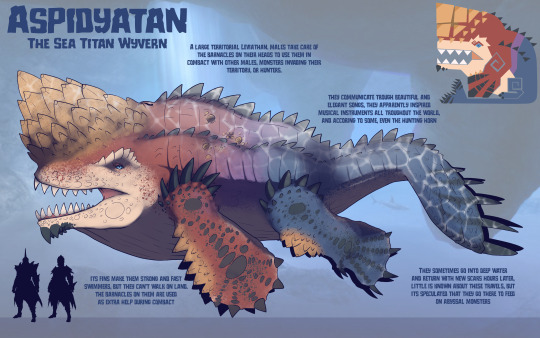
Whales are cool, so here's a Monster hunter whale I made up
#artists on tumblr#art#monster hunter#mh#monhun#monhun fanart#leviathan#Livyatan#creature design#monster design#speculative evolution#spec evo
243 notes
·
View notes
Text

A drawing I did of my character Kekoa the Livyatan whale, Enjoy!
#ocs#myart#Livyatan#Whale#merpeople#Kekoa#chief#been a long time till I drew something on DP so this was fun
91 notes
·
View notes
Text
Mermay 2022: Paleontology Infuenced Merfolk
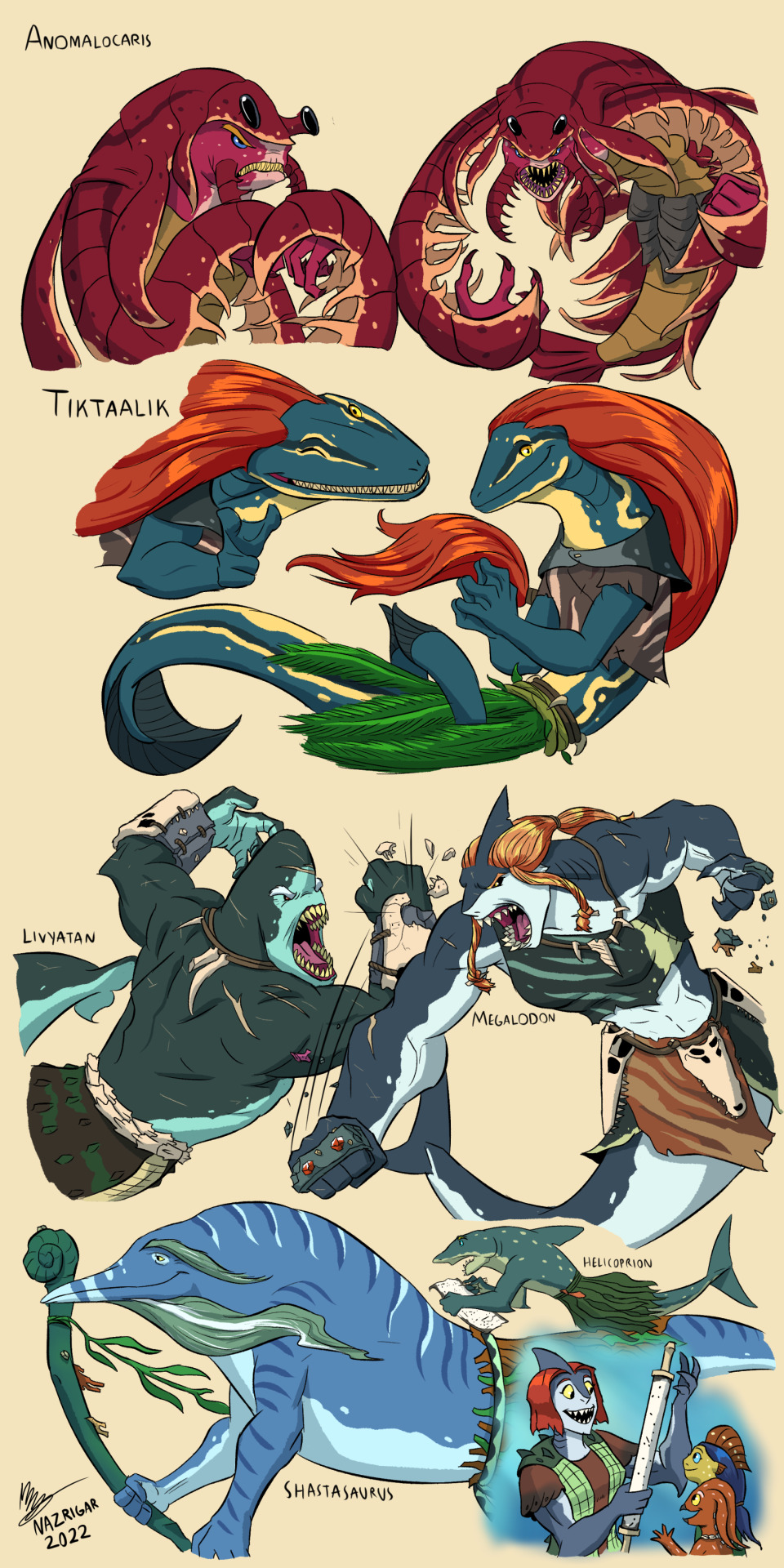
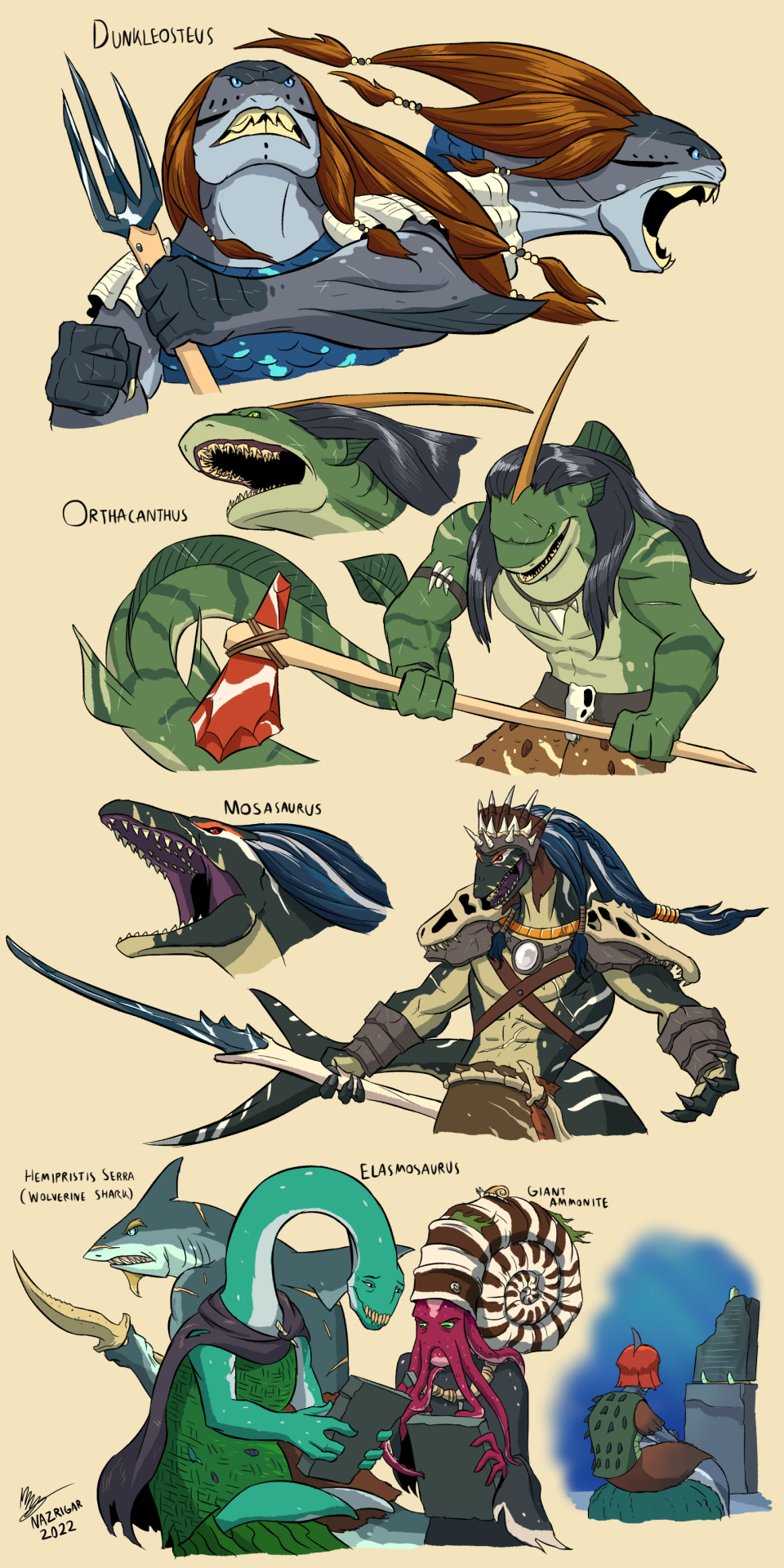
Part 1
Part 2
Part 3
The final batch of drawings for Mermay! Thank you all so, so much for the response. Never in my wildest dreams would I have thought this series to be so well liked and successful on so many of my social media platforms.
I felt like for the final batch, I wanted to explore how paleontology influenced merfolk would look like, and how they influence ‘modern’ merfolk. (Prehistoric Planet probably influenced my decision haha)
These are the lads and lasses that help found the formation for merfolk culture, from first-of-the-firsts like the Anomalocaris and the Tiktaalik to true giants of the sea, like Shastasaurus, Livyatan and Megalodon. The Megalodon is Kara’s personal idol. (Kara’s the great white shark featured in all previous batches, here she’s teaching kids how cool history is!)
The most important figure here in Merfolk history is actually the Mosasaurus, AKA The Ocean Lord. He was a Barbarian King who hated landlubbers and was the sworn nemesis of "The Tyrant King”. He’s revered by modern Merfolk for his combination of strength, cunning, battle prowess and magnetic personality.
However, a tablet written during his time paints a different picture of the Ocean Lord: One of an arrogant, bloodthirsty ruler whose conquering ways and obsessive hatred of the landlubbers did more harm long term than anyone could have imagined.
A shout out to @miuzes , who motivated and helped me with tips all throughout the way. Another shout out @florence-is-gay / @legendary-disaster , who made fan art of Kara!. I’m STILL freaking out! Never would I expect I’d get fan art for this! :D
#mermay#mermay 2022#mermaid#mosasaurus#tiktaalik#megalodon#anomalocaris#livyatan#dunkleosteus#orthacanthus#shastasaurus#ammonite#wolverine shark#elasmosaurus#merpeople#merfolk#mermaids#fantasy#creature design#character design#my art#nazrigart#paleontology#marine biology
1K notes
·
View notes
Text
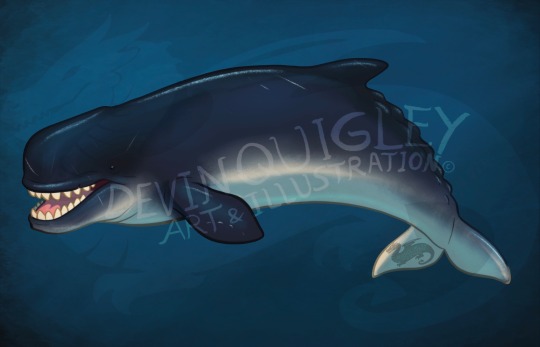
Paleovember 2023, Livyatan melvillei!
So it turns out that Megalodon wasn't the only giant sea monster prowling the oceans during the Miocene, far from it! This relative of the modern sperm whale measured up to 57 feet long, and while modern sperm whales only have teeth on the lower jaw, Livyatan had VERY large teeth on both jaws. This made it a terrifying macroraptorial predator, and in it's heyday would have preyed on everything from seals to other whales, and would have been a major rival to Megalodon.
#livyatan#whale#sperm whale#miocene#sea monster#paleoart#paleontology#evolution#prehistoric#animal art#illustration#art#artwork#cartoon#digitalart#drawing#procreate#art challenge#artist on tumblr#Paleovember
59 notes
·
View notes
Text

After making the reconstruction of O. megalodon it was necessary to complete the pack of titanic miocene marine predators, and from the coast of Peru, Livyatan rises up as one of the biggest raptorial sperm whales known with the holotype only formed by a large head of almost 3 meters in length.

And also the usual comparison size with its eternal marine foe, the big head shark, which seems that these were common on Pisco. Probably Livyatan evaded large Otodus bulls in order to avoid lethal confrontation or just gathered in groups like modern cetaceans.
I'm a little cautious about its body size as range of length estimations have been very variable depending of body model, in this situation as I explained in the chart I picked a more conservative recontruction considering the proportions of other raptorial sperm whale, at least until some postcranial material that can be referred to this genus is found
359 notes
·
View notes
Text

Fossil Novembirb: Day 24
Some Spheniscus urbinai swimming near a Livyatan
23 notes
·
View notes
Text

First Single 'Leviathan' Released On All Major Platforms! 🐋
Original Artwork by Ningbo Zhang
#cyberpunk art#hard dance#science fiction#cyber techno#sci fi whale#peak time techno#cyber whale#cyberpunk techno#leviathan#livyatan#futuristic techno#cyber hard dance#sci fi music#mechanic whale#cyber sea animal#sci fi animal#hard techno#rave music#queer artist#queer rave#queer techno#lgbtq+ artist#techno producer#queer producer#techno music#gritty techno#aggressive techno#futuristic whale#gritty#akudama
247 notes
·
View notes
Text
National Fossil: Peru
We‘re continuing our travels through South America and the next stop is Peru.
Once again, you get to vote on which one should represent the nation. As always, it could be a fossil that is just exceptionally well preserved and beautiful, had a huge impact on paleontology and our knowledge of the past, is very common/representative of the area, is beloved and famous in the public eye, is just a very unique and interesting find, or has any other justification.
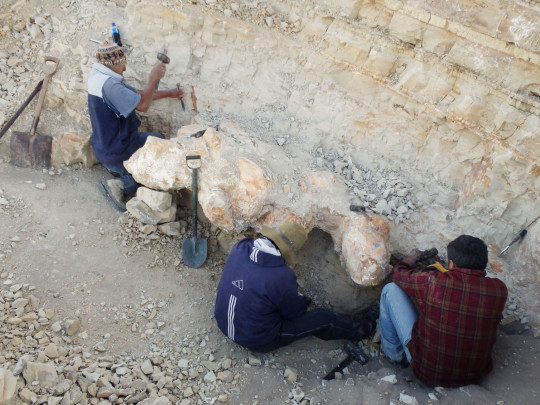

Perucetus: The first contestant has just been described earlier this year. Named after its home country, the giant whale made headlines because it might be the heaviest animal that ever lived, even surpassing the modern blue whale (just keep in mind that this is still very much up for debate as Perucetus‘ estimated size range spans from “just“ 85 t to well over 300 t; Art by Adam Works)
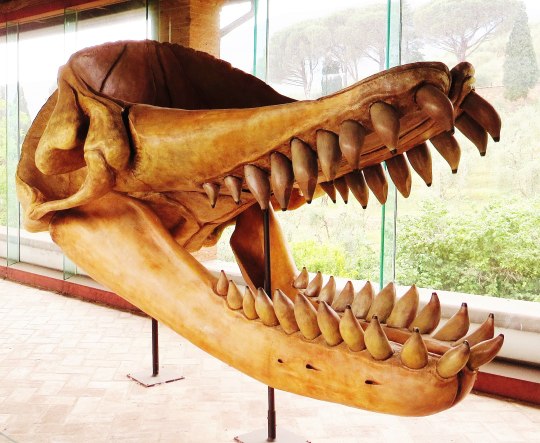

Livyatan: In case one giant whale is not enough, Peru also offers you Livyatan, named after the biblical monster. It was first discovered in Peru, where it lived about 30 million years after Perucetus. It was similar in size to its modern cousin, the sperm whale. (Art by Balasz Petheo)
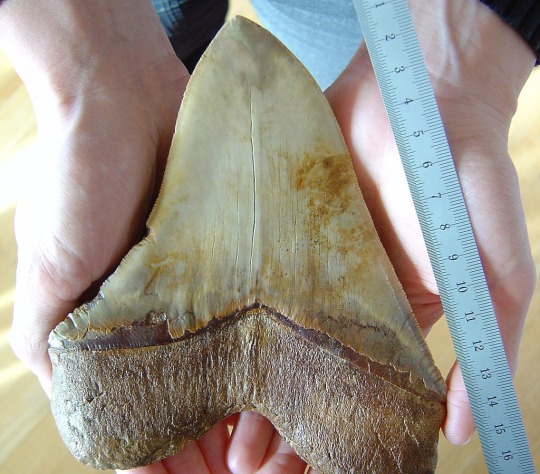

Megalodon: It seems to be an unspoken rule of paleo that you cannot mention Livyatan without pointing out that they shared a habitat and directly competed with megalodon, fighting brutal battles to the death (honestly, they were probably both chill and just stayed out of each others way, but whatever…). Since it had a global distribution, picking megalodon as a National Fossil might be a bit controversial - on the other hand: There have been fossils found in Peru and no other country has claimed the giant shark yet, so this is your chance to call dibs on the famed movie monster.

Inkayacu: Next up is a cute penguin! Well, cute might be the wrong word considering it was almost as tall as me. Inkayacu lived about 35 million years ago during the Eocene (btw great time to be a giant penguin) and is known from very well preserved fossils, including feathers. From the material researcher could even tell its coloration and unlike its modern relatives, Inkayacu was reddish-brown and grey. (Art by Ripley Cook)


Thalassocnus: Ground sloths are among the most iconic prehistoric South American fauna, and this one is not just your regular weird giant ground sloth - it was a semi-aquatic giant ground sloth! There are multiple species of these guys known, all from slightly different ages. They show very well how they transitioned to a more aquatic lifestyle over time, making them a great example for evolution in progress. (Art by Mark Witton)
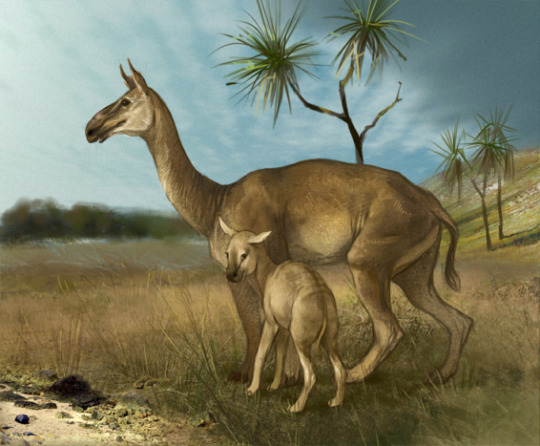
Macrauchenia: Lastly we have the “long llama“ as the name translates. Since today llamas (well, vicunas, but same difference) are Perus national animal, I wanted to give an option that resembles them. Macrauchenia actually belongs to a now extinct line of hoofed mammals that lived in South America back when the continent was still separated from all other land masses. While they weren‘t too closely related to our modern camels and llamas, they probably filled a similar niche. (Art by Olga Kobrina)
#paleobr#paleontology#fossils#peru#perucetus#livyatan#megalodon#penguin#ground sloth#macrauchenia#national fossil
14 notes
·
View notes
Text
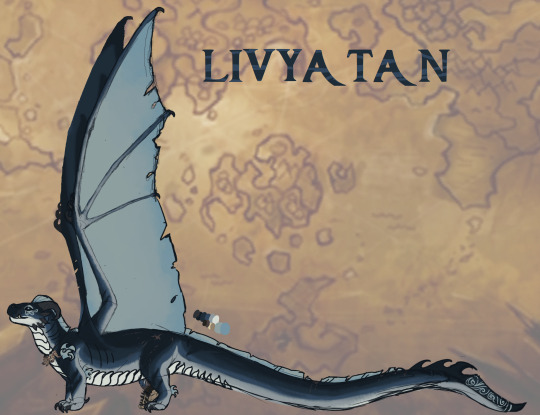
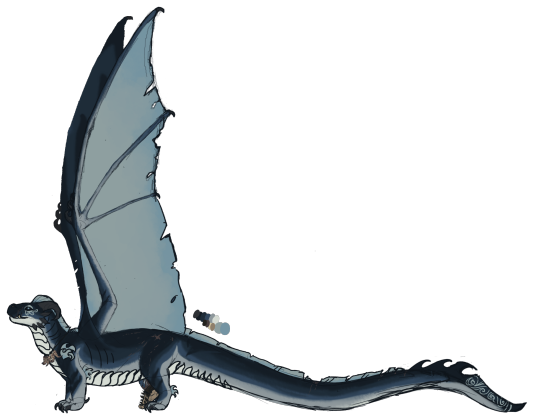
Oh great, it's Liv!!!! I missed them!
#the legend of spyro#tlos#spyro the dragon#dragons#tlos oc#my ocs#oc#livyatan#my designs#my characters#fandoms#fanart#my art tag (abandon all hope ye who enter here)#mine#redesign
17 notes
·
View notes
Text


Blubby suffer nothing but tough love in their pod, the demanding lifestyle they must become accustomed to necessitates growing up quick and hardy. Despite their meek disposition they are very resilient and can take quite a beating from their siblings with little ill effect.
Blubbully are rambunctious pokemon that after enduring a trying childhood have begun to take it out on their younger siblings. Even more robust than they were, they are now capable of making the deep dives required to search for their favoured prey, though it remains a dangerous quarry with its own risks.
Blubbemoth are terrifying pokemon that hunt in the deepest reaches of the sea and target particularly dreadful prey, making them tough and no-nonsense. Although they permit the vicious in-fighting their young must endure, they will tolerate no such behaviour from any creature outside of its pod.
--Attack Info--
--Ability Info--
5 notes
·
View notes
Text
CETACEAN FACT #91,004:
(ノ◕ヮ◕)ノ*:・゚✧ ✧゚・:
Sperm whales’ ancestor was the Livyatan, also known as L. melvillei. They had big ol’ shearing teeth on BOTH jaws and is believed to have eaten a diet of other predators (including sharks!). Another neat theory suggests they used their concave skulls to ram into prey/other potential suitors to their whale-crushes.
Please enjoy the mental image of a moshpit of whales headbutting each other for the chance to make bebes.
12 notes
·
View notes
Text
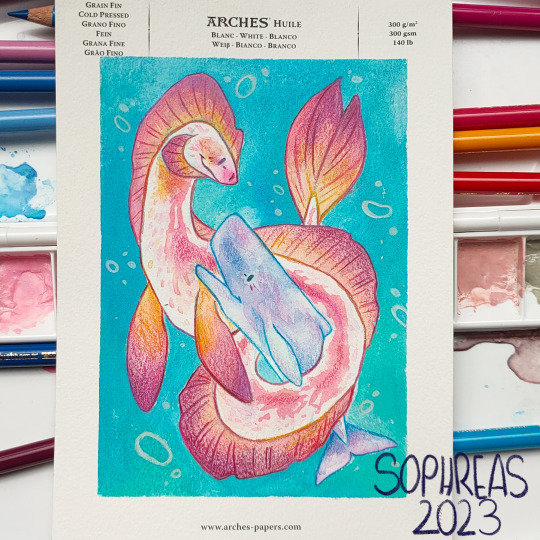
The meeting of giants
Oh boy oh man oh geez, here we go, October has arrived. I will try to do many drawings, but we always start very optimistic and ambitious don't we ^^
The livyatan melvillei is an extinct genus of sperm whale, living about 9.9 to 8.9 mya. Reaching a size of about 17 metres, it probably was an apex predator. Its teeth measured 36.2 cm, making them the largest biting teeth of any known animal, excluding tusks. Its name comes from Herman Melville, author of Moby Dick and the biblical sea monster Leviathan.
2 notes
·
View notes
Text

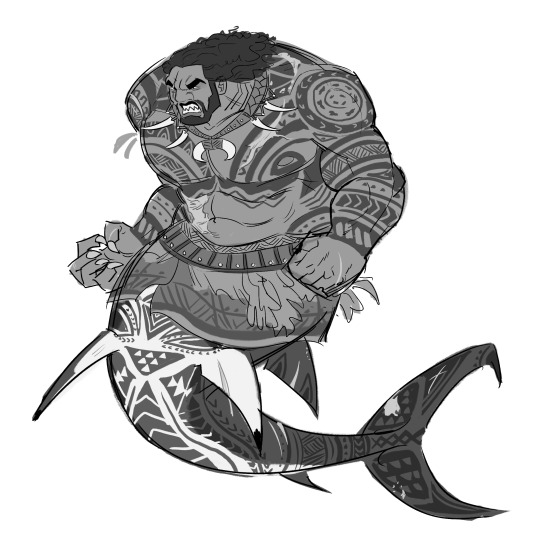
Felt like doing a greyscale of Kekoa and Mahoa, enjoy!
68 notes
·
View notes
Text

The giant raptorial cetacean, Livyatan (who is oversized and needs a bigger head)! havin' a whale of a time, despite the judgmental Pelagornis.
17 notes
·
View notes
Text
There was a whale 13-16 meters long (45-60 in American), occupying a niche similar to orcas and big ass sharp teeth. If it had a brain and tendencies similar to orcas than that thing was a m e n a c e
#so yes in my opinion a livyatan whale would fucking body a megalodon#imagine a fucking 16 meter orca#that is terrifying#livyatan whale#livyatan#unintelligible goblin noises
6 notes
·
View notes